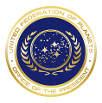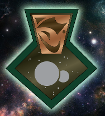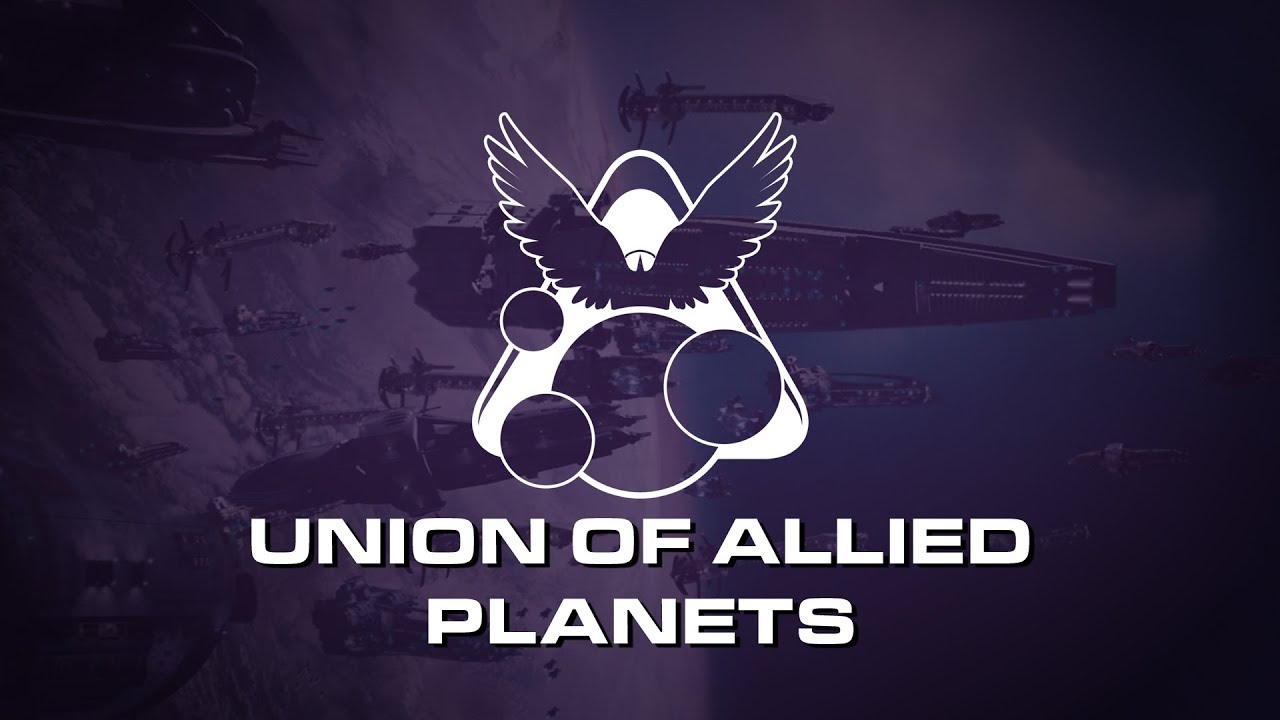Political Overview
This section will provide a quick sense of the political status
of major powers in the galaxy and beyond.
of major powers in the galaxy and beyond.
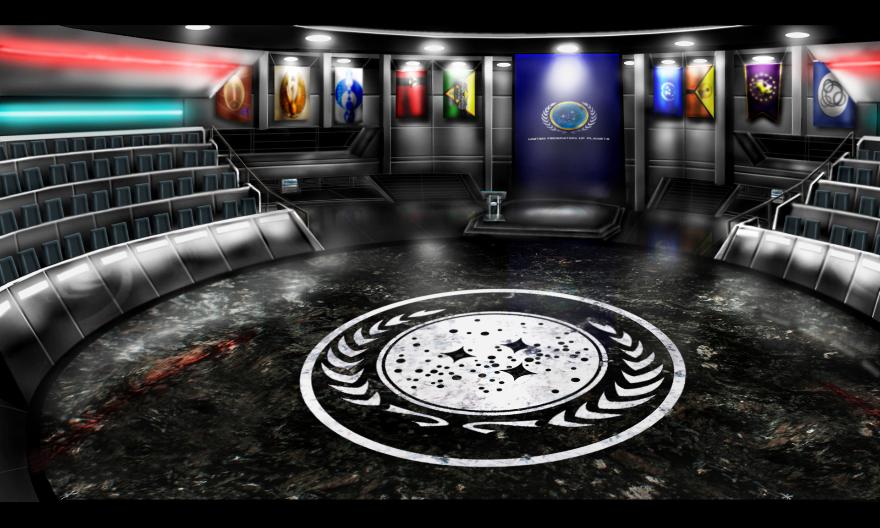
List of Major Political Entities
(Use the links below to quickly access that government's data)
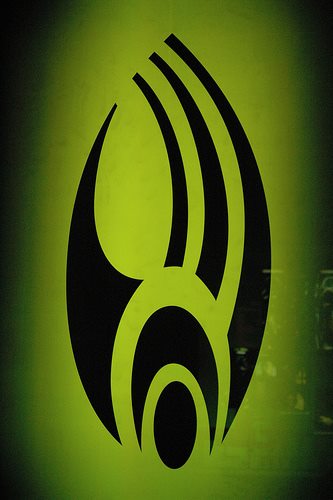
The BORG FEDERATION is a Delta Quadrant power, ruled by the Borg, a pseudo-species of cyborgs that were formerly one of the greatest threats to all life in the galaxy.
Shortly after the reintroduction of "Hugh" (a Borg drone that had gained individuality at the hands of Starfleet), and the destruction of their transwarp hubs in the Delta Quadrant in 2375, the Borg Collective began to unravel. Many millions of drones died, cut off from the Collective, but some were saved by Hugh and his newly individualised comrades. It took decades for the Borg to reform and adapt to their new life, and when they did it was as a much smaller organisation than before. The Collective was replaced with the Network, an advanced subspace web, that is today used for information exchange and integration, connecting all Borg together through a voluntarily-accessible subspace network. The Borg also excised the most invasive cybernetic implants from their society, but retained many other enhancements. By the turn of the 25th century, the Borg were united into a Federation that was modelled on the United Federation of Planets.
No longer the robotic zombies of the past, these new Borg embraced the values they had lost while assimilated. Being composed of many different species, they recognised their diversity and took strength from it. Each Borg was now a free individual, able to choose a life for themselves. Most chose to remain in the Delta Quadrant, but some Borg who have family and friends alive on Alpha Quadrant worlds have returned home, seeking to reintegrate themselves into their old lives.
The Borg Federation, led by its own Council, is on good terms with the United Federation of Planets, but is still very protective of its technology and its space as it grows in confidence. There are groups within the Borg Federation, known as the Neo-Collective, who want to return to rule under a Queen. A brief civil war between these factions was fought in 2414, that dragged in both the United Federation of Planets and the Dominion.
The Borg no longer forcibly assimilate other species, but they welcome immigrants into their Federation. They continue to strive toward the gestalt of organic and mechanical, but any cyberwear is now voluntary, meant to enhance the individual.
In the space of half a century, they have completely transformed themselves and their society. Only time will tell if it can be sustained, but for the Borg, the future is bright.
Shortly after the reintroduction of "Hugh" (a Borg drone that had gained individuality at the hands of Starfleet), and the destruction of their transwarp hubs in the Delta Quadrant in 2375, the Borg Collective began to unravel. Many millions of drones died, cut off from the Collective, but some were saved by Hugh and his newly individualised comrades. It took decades for the Borg to reform and adapt to their new life, and when they did it was as a much smaller organisation than before. The Collective was replaced with the Network, an advanced subspace web, that is today used for information exchange and integration, connecting all Borg together through a voluntarily-accessible subspace network. The Borg also excised the most invasive cybernetic implants from their society, but retained many other enhancements. By the turn of the 25th century, the Borg were united into a Federation that was modelled on the United Federation of Planets.
No longer the robotic zombies of the past, these new Borg embraced the values they had lost while assimilated. Being composed of many different species, they recognised their diversity and took strength from it. Each Borg was now a free individual, able to choose a life for themselves. Most chose to remain in the Delta Quadrant, but some Borg who have family and friends alive on Alpha Quadrant worlds have returned home, seeking to reintegrate themselves into their old lives.
The Borg Federation, led by its own Council, is on good terms with the United Federation of Planets, but is still very protective of its technology and its space as it grows in confidence. There are groups within the Borg Federation, known as the Neo-Collective, who want to return to rule under a Queen. A brief civil war between these factions was fought in 2414, that dragged in both the United Federation of Planets and the Dominion.
The Borg no longer forcibly assimilate other species, but they welcome immigrants into their Federation. They continue to strive toward the gestalt of organic and mechanical, but any cyberwear is now voluntary, meant to enhance the individual.
In the space of half a century, they have completely transformed themselves and their society. Only time will tell if it can be sustained, but for the Borg, the future is bright.
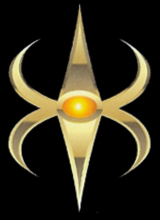
The Breen Confederacy is an interstellar power located in the Alpha Quadrant. Its capital world is Beta Epsilon-Venturi VII (also known as Breen), a frozen class-P ice planet. Their neighbours include the Sheliak Corporate, the New Ferengi Alliance, the Romulan Star Empire, and the United Federation of Planets. Relations with the latter have not been historically smooth.
First Contact between the Breen Confederacy and the Federation occurred in the 23rd century, but the Breen declined diplomatic relations and remained non-aligned to any imperial power, vigorously defending their own small territory against any foreign intrusion. It was not until the outbreak of the First Dominion War that the Breen entered intergalactic politics.
In 2375, the Breen allied with the Dominion and entered the war, launching a surprise attack on Earth itself, damaging the city of San Francisco and Starfleet Headquarters. It was the first successful attack on the Federation's capital planet in two centuries. Although successful in this instance, the Breen were ultimately on the losing side in the war, and under the Treaty of Bajor were compelled to return to their home system.
Since then there has been no official contact between the Federation and the Confederacy. Although ostensibly neutral, many Breen act as pirates or raiders, or hire themselves out to third parties as mercenaries. The Confederacy itself refuses to comment, or put a stop to, these actions, leading many to wonder what the future holds for Federation-Breen relations.
First Contact between the Breen Confederacy and the Federation occurred in the 23rd century, but the Breen declined diplomatic relations and remained non-aligned to any imperial power, vigorously defending their own small territory against any foreign intrusion. It was not until the outbreak of the First Dominion War that the Breen entered intergalactic politics.
In 2375, the Breen allied with the Dominion and entered the war, launching a surprise attack on Earth itself, damaging the city of San Francisco and Starfleet Headquarters. It was the first successful attack on the Federation's capital planet in two centuries. Although successful in this instance, the Breen were ultimately on the losing side in the war, and under the Treaty of Bajor were compelled to return to their home system.
Since then there has been no official contact between the Federation and the Confederacy. Although ostensibly neutral, many Breen act as pirates or raiders, or hire themselves out to third parties as mercenaries. The Confederacy itself refuses to comment, or put a stop to, these actions, leading many to wonder what the future holds for Federation-Breen relations.
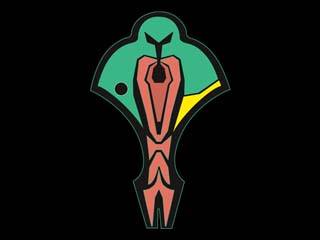
The CARDASSIAN UNION has been in a state of stagnation for the past sixty years, and shows no signs of being able to return to its former status as one of the quadrant's main powers.
Since its defeat in the First Dominion War over fifty years ago, the socio-economic and military status of the Union has been in inexorable decline. After the war, the Cardassians, now under the civilian authority of the New Detapa Council, began an ambitious rebuilding programme, but many of its outlying colonies failed, leading to stagnation in trade and development and the grinding halt of the government's rebuilding programme.
As domestic problems mounted and the military no longer able to defend the Union's shrunken borders, the Detapa Council was approached in 2385 by the remnants of the government of the Klingon Empire. At that time, the Romulan-Klingon War was almost at an end, and the Klingons, desperate for allies, reached out to the Cardassians. An agreement was struck whereby the Cardassians gave up the newly-liberated star systems conquered by the Klingons during the First Dominon War in exchange for Klingon cloaking technology. Armed with this new technology, and anxious for a way to divert the attention of their increasingly-restless populace, the Cardassian government began to behave in an increasingly aggressive manner towards the Federation, seeking to expand its intergalactic influence and return to its old powerful status.
This breakdown in relations led to the outbreak of the Alliance War of 2388-2391. The Cardassian Union and its Klingon allies attacked the Federation, but the war went badly for the allies from the beginning. Starfleet had prepared for the conflict by sending numerous task forces to the border sectors, and the Federation's sensor technology had advanced to a level that exceeded Klingon cloaking technology. Starfleet fought defensively, and as the war dragged on, defeat after humiliating defeat followed for the Cardassians and the Klingons. When a ceasefire was finally declared, the Cardassians' intergalactic prestige had suffered badly.
In 2411, the alien race known as the Kem D'Neel attacked the Alpha Quadrant in a war of genocide. The weakened Cardassian Union lost upward of 40% of its standing military forces to the unstoppable Enforcers, who came close to exterminating the Cardassian people from existence. Consequently, there was only a small Cardassian presence among the fleet that fought and won the Seventh War of Retribution at Coriana III.
Following Coriana III, the government of the Cardassian Union changed again. The New Detapa Council dissolved, and has since been replaced by a body of Legates, made up of senior military officers and civilian politicians.
Today, the Cardassians are a shadow of the power they once were. Although on unfriendly terms with the Federation, their economy remains stagnant and they have become insular and isolationist, no longer participating in intergalactic affairs. Their time on the stage of history, it appears, has come to an end.
Since its defeat in the First Dominion War over fifty years ago, the socio-economic and military status of the Union has been in inexorable decline. After the war, the Cardassians, now under the civilian authority of the New Detapa Council, began an ambitious rebuilding programme, but many of its outlying colonies failed, leading to stagnation in trade and development and the grinding halt of the government's rebuilding programme.
As domestic problems mounted and the military no longer able to defend the Union's shrunken borders, the Detapa Council was approached in 2385 by the remnants of the government of the Klingon Empire. At that time, the Romulan-Klingon War was almost at an end, and the Klingons, desperate for allies, reached out to the Cardassians. An agreement was struck whereby the Cardassians gave up the newly-liberated star systems conquered by the Klingons during the First Dominon War in exchange for Klingon cloaking technology. Armed with this new technology, and anxious for a way to divert the attention of their increasingly-restless populace, the Cardassian government began to behave in an increasingly aggressive manner towards the Federation, seeking to expand its intergalactic influence and return to its old powerful status.
This breakdown in relations led to the outbreak of the Alliance War of 2388-2391. The Cardassian Union and its Klingon allies attacked the Federation, but the war went badly for the allies from the beginning. Starfleet had prepared for the conflict by sending numerous task forces to the border sectors, and the Federation's sensor technology had advanced to a level that exceeded Klingon cloaking technology. Starfleet fought defensively, and as the war dragged on, defeat after humiliating defeat followed for the Cardassians and the Klingons. When a ceasefire was finally declared, the Cardassians' intergalactic prestige had suffered badly.
In 2411, the alien race known as the Kem D'Neel attacked the Alpha Quadrant in a war of genocide. The weakened Cardassian Union lost upward of 40% of its standing military forces to the unstoppable Enforcers, who came close to exterminating the Cardassian people from existence. Consequently, there was only a small Cardassian presence among the fleet that fought and won the Seventh War of Retribution at Coriana III.
Following Coriana III, the government of the Cardassian Union changed again. The New Detapa Council dissolved, and has since been replaced by a body of Legates, made up of senior military officers and civilian politicians.
Today, the Cardassians are a shadow of the power they once were. Although on unfriendly terms with the Federation, their economy remains stagnant and they have become insular and isolationist, no longer participating in intergalactic affairs. Their time on the stage of history, it appears, has come to an end.
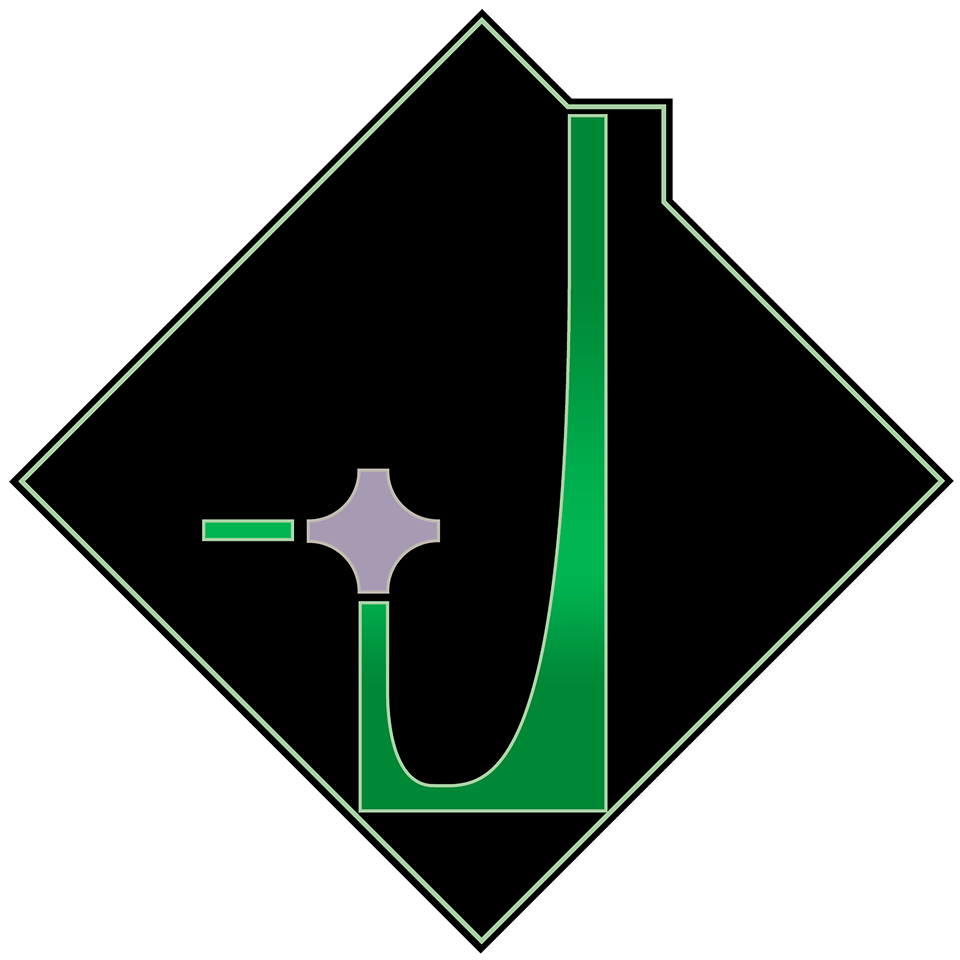
THE DOMINION is a major interstellar state in the Gamma Quadrant. It has been in existence for over two millennia, and to date the Federation has fought two costly wars against it.
The Dominion was founded by the race of gelatinous shapeshifters known as the Founders in order to protect themselves from 'solid' lifeforms and to impose their version of suppressive order upon the galaxy. The Founders used their shapeshifting ability to infiltrate and manipulate many societies into their thrall, and also genetically engineered servitor races like the Vorta and Jem'Hadar in order to carry out their will. They carved out a large empire in the Gamma Quadrant in the nineteen centuries between the Dominion's formation and First Contact with the Federation.
The Founders became aware of the existence of the Bajoran wormhole and its easy route to the Alpha Quadrant where the Federation was the dominant power. A cold war between the two began sixty-one years ago (2370), with the Founders infiltrating the Klingon government in order to put strain on the Khitomer Accords and forming an alliance with the Cardassian Union. The inevitable war broke out in 2373, raging for almost three years and pulling in the Klingons, Romulans, and Breen. Finally, with the Founders being ravaged by a morphogenic virus, the Federation-led alliance was able to achieve both a military victory and a peace of sorts with the Founders, who retreated to their homeworld in the Omarion Nebula.
The Dominion made First Contact with the Kem D'Neel in 2409, but they did not reveal the Enforcers' existence to anyone else. It is unknown why, and it is also unknown what, if any, losses were suffered by the Dominion when the Kem D'Neel genocide began.
Peace reigned between the Federation and the Dominion for several decades, and in order to protect its shipping interests in the Gamma Quadrant, the Federation constructed Gateway Station on the far side of the wormhole. Gateway came online in 2414, but its mere presence in the Gamma Quadrant was deemed to be a threat to the Dominion. The Founders moved to politically isolate Gateway before launching an attack upon it in 2422, sparking the Second Dominion War. This short but bloody conflict ended after almost two years of fighting, in which Starfleet managed to both hold on to its access to the wormhole and successfully defend Gateway from siege by the Dominion. The Treaty of Denorius brought this conflict to a close, restoring the status quo ante bellum.
The ending of the Second Dominion War is approaching a decade in the past, and to date the Dominion has remained quiet. There were fears that the Founders would use the Neo-Essentialist crisis to make another attempt to besiege Gateway, but nothing untoward has occurred. A true peace remains a distant dream, however, and it may be that the Domininon is merely biding its time before launching a third attack. The Great Link, after all, has the patience of millennia.
The Dominion was founded by the race of gelatinous shapeshifters known as the Founders in order to protect themselves from 'solid' lifeforms and to impose their version of suppressive order upon the galaxy. The Founders used their shapeshifting ability to infiltrate and manipulate many societies into their thrall, and also genetically engineered servitor races like the Vorta and Jem'Hadar in order to carry out their will. They carved out a large empire in the Gamma Quadrant in the nineteen centuries between the Dominion's formation and First Contact with the Federation.
The Founders became aware of the existence of the Bajoran wormhole and its easy route to the Alpha Quadrant where the Federation was the dominant power. A cold war between the two began sixty-one years ago (2370), with the Founders infiltrating the Klingon government in order to put strain on the Khitomer Accords and forming an alliance with the Cardassian Union. The inevitable war broke out in 2373, raging for almost three years and pulling in the Klingons, Romulans, and Breen. Finally, with the Founders being ravaged by a morphogenic virus, the Federation-led alliance was able to achieve both a military victory and a peace of sorts with the Founders, who retreated to their homeworld in the Omarion Nebula.
The Dominion made First Contact with the Kem D'Neel in 2409, but they did not reveal the Enforcers' existence to anyone else. It is unknown why, and it is also unknown what, if any, losses were suffered by the Dominion when the Kem D'Neel genocide began.
Peace reigned between the Federation and the Dominion for several decades, and in order to protect its shipping interests in the Gamma Quadrant, the Federation constructed Gateway Station on the far side of the wormhole. Gateway came online in 2414, but its mere presence in the Gamma Quadrant was deemed to be a threat to the Dominion. The Founders moved to politically isolate Gateway before launching an attack upon it in 2422, sparking the Second Dominion War. This short but bloody conflict ended after almost two years of fighting, in which Starfleet managed to both hold on to its access to the wormhole and successfully defend Gateway from siege by the Dominion. The Treaty of Denorius brought this conflict to a close, restoring the status quo ante bellum.
The ending of the Second Dominion War is approaching a decade in the past, and to date the Dominion has remained quiet. There were fears that the Founders would use the Neo-Essentialist crisis to make another attempt to besiege Gateway, but nothing untoward has occurred. A true peace remains a distant dream, however, and it may be that the Domininon is merely biding its time before launching a third attack. The Great Link, after all, has the patience of millennia.

The FERENGI ALLIANCE of the 25th century has entered a new period in its history following its union with the United Federation of Planets thirty-eight years ago. Never a militarily powerful species, the small territories of the Alliance had nevertheless a strong economic tradition, which began to change when the Ferengi branched out into the galaxy.
Official First Contact between the two governments occurred in 2364, and over the next twenty years both societies grew closer together. Ferengi merchants expanded throughout the Federation, primarily trading on worlds and outposts far from the Federation's core worlds. A seismic shift began to occur in Ferengi economic thinking - as they tapped into the Federation's enormous trading network, the Ferengi began to move away from cut-throat free enterprise and towards a business model that was compatible with the Federation's values of social justice and equality.
As economic rivalries with the rising Orion Syndicate began to impact on them during the 2380s, the Ferengi moved towards diplomacy to enhance their relationship with the Federation. The two powers became economic allies, forming a trading bloc where tariffs were reduced and the flow of goods was unimpeded. This move strengthened both the Federation and the Ferengi so well that in 2395 there occurred the most momentous event in Ferengi history - the Great Merger with the Federation.
Under the direction of the ageing Grand Nagus Rom, a new relationship was negotiated between the Ferengi and the Federation. In return for being absorbed into the Federation, the Ferengi would gain monopolies and exclusive rights over many trade routes, as well as becoming the administrators of the Federation's Department of the Treasury. The Great Merger, Rom declared, would be the most profitable venture the Ferengi people had ever undertaken.
Not all of his people followed suit - some traditionalist Ferengi fled their homeworld and founded a New Ferenginar and retained the name of the Ferengi Alliance.
Since the Great Merger, the Ferengi have become citizens of the United Federation of Planets, gaining a seat in the Assembly (but as yet have not been elected to the Council). Today, they oversee and direct the Federation's macro-economy, and have been responsible for keeping a steady course in galactic markets since then.
The Ferengi people seem to be enjoying life as part of the great alliance, and although some traditionalists on Ferenginar continue to agitate for independence, the current Grand Nagus has no plans to cancel the Great Merger. Although some sociologists have wondered aloud at how quickly the Ferengi have shifted their philosophy without massive social upheaval, most see it as a financial master-stroke and a perfect example of how seizing a business opportunity can result in long-term gains.
Today, Ferengi show little appetite for service in Starfleet, preferring their traditional roles in finance. They remain shrewd (and occasionally devious) merchants, and can be found on almost all settled Federation worlds and colonies, plying their trades in the new economy of the 25th century.
Official First Contact between the two governments occurred in 2364, and over the next twenty years both societies grew closer together. Ferengi merchants expanded throughout the Federation, primarily trading on worlds and outposts far from the Federation's core worlds. A seismic shift began to occur in Ferengi economic thinking - as they tapped into the Federation's enormous trading network, the Ferengi began to move away from cut-throat free enterprise and towards a business model that was compatible with the Federation's values of social justice and equality.
As economic rivalries with the rising Orion Syndicate began to impact on them during the 2380s, the Ferengi moved towards diplomacy to enhance their relationship with the Federation. The two powers became economic allies, forming a trading bloc where tariffs were reduced and the flow of goods was unimpeded. This move strengthened both the Federation and the Ferengi so well that in 2395 there occurred the most momentous event in Ferengi history - the Great Merger with the Federation.
Under the direction of the ageing Grand Nagus Rom, a new relationship was negotiated between the Ferengi and the Federation. In return for being absorbed into the Federation, the Ferengi would gain monopolies and exclusive rights over many trade routes, as well as becoming the administrators of the Federation's Department of the Treasury. The Great Merger, Rom declared, would be the most profitable venture the Ferengi people had ever undertaken.
Not all of his people followed suit - some traditionalist Ferengi fled their homeworld and founded a New Ferenginar and retained the name of the Ferengi Alliance.
Since the Great Merger, the Ferengi have become citizens of the United Federation of Planets, gaining a seat in the Assembly (but as yet have not been elected to the Council). Today, they oversee and direct the Federation's macro-economy, and have been responsible for keeping a steady course in galactic markets since then.
The Ferengi people seem to be enjoying life as part of the great alliance, and although some traditionalists on Ferenginar continue to agitate for independence, the current Grand Nagus has no plans to cancel the Great Merger. Although some sociologists have wondered aloud at how quickly the Ferengi have shifted their philosophy without massive social upheaval, most see it as a financial master-stroke and a perfect example of how seizing a business opportunity can result in long-term gains.
Today, Ferengi show little appetite for service in Starfleet, preferring their traditional roles in finance. They remain shrewd (and occasionally devious) merchants, and can be found on almost all settled Federation worlds and colonies, plying their trades in the new economy of the 25th century.
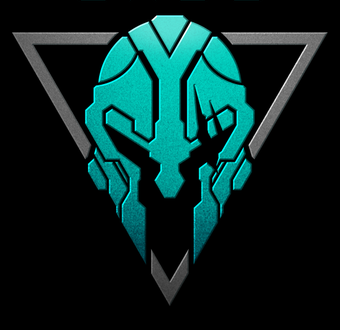
Little is known about the governmental style of this race of trans-dimensional conquerors. Using data gathered over the few encounters with the race and their dealings with others, it is believed that the Masters follow a purely militaristic style of government.
Members of this race are never encountered alone, always part of a team or crew. Although their vessels have been known to operate alone, it has been observed on several occasion that back-up is never far leading most to agree that this race operates under a very close control system.
Members of this race are never encountered alone, always part of a team or crew. Although their vessels have been known to operate alone, it has been observed on several occasion that back-up is never far leading most to agree that this race operates under a very close control system.
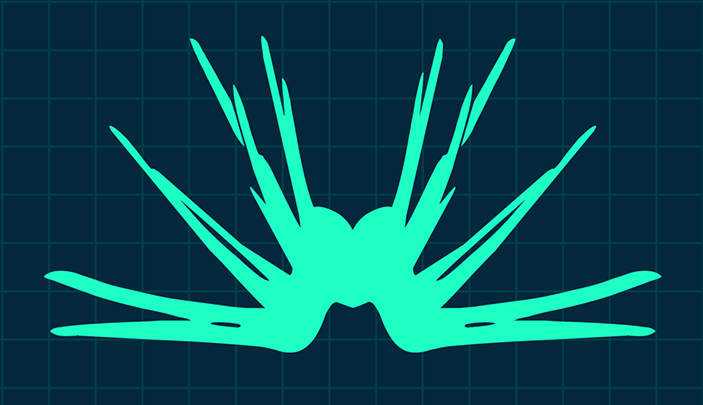
Although little is known about this race there are indications that they have been around since the birth of the universe. Mentions of ships and creatures born of the shadows can be found in the records of the most ancient races. The legends surounding these 'Monsters of the Night' puts them in and endless war against the forces of light.
During the last confrontation which is referred to as the War of Shadows (2434-2435) it was discovered that the Shadows are in fact a race of transdimensional being who believe that evolution is best served through conflict, allowing for the stronger races to emerge stronger without having to be concerned by other, weaker races. It was also learned that the Lokustaar had managed to infiltrate and influence many organizations and governments, increasing political frictions between them hoping to create wars. Although the plan to see the galaxy plunged into a full war was stopped, many worlds suffered heavy casualties before the Lokustaar were finally locked out from this dimension. Some of their ships and opertives are unfortunately still here, hiding while trying to find a way to either return to their home dimension or find a way to finish the task they had come here to do.
During the last confrontation which is referred to as the War of Shadows (2434-2435) it was discovered that the Shadows are in fact a race of transdimensional being who believe that evolution is best served through conflict, allowing for the stronger races to emerge stronger without having to be concerned by other, weaker races. It was also learned that the Lokustaar had managed to infiltrate and influence many organizations and governments, increasing political frictions between them hoping to create wars. Although the plan to see the galaxy plunged into a full war was stopped, many worlds suffered heavy casualties before the Lokustaar were finally locked out from this dimension. Some of their ships and opertives are unfortunately still here, hiding while trying to find a way to either return to their home dimension or find a way to finish the task they had come here to do.
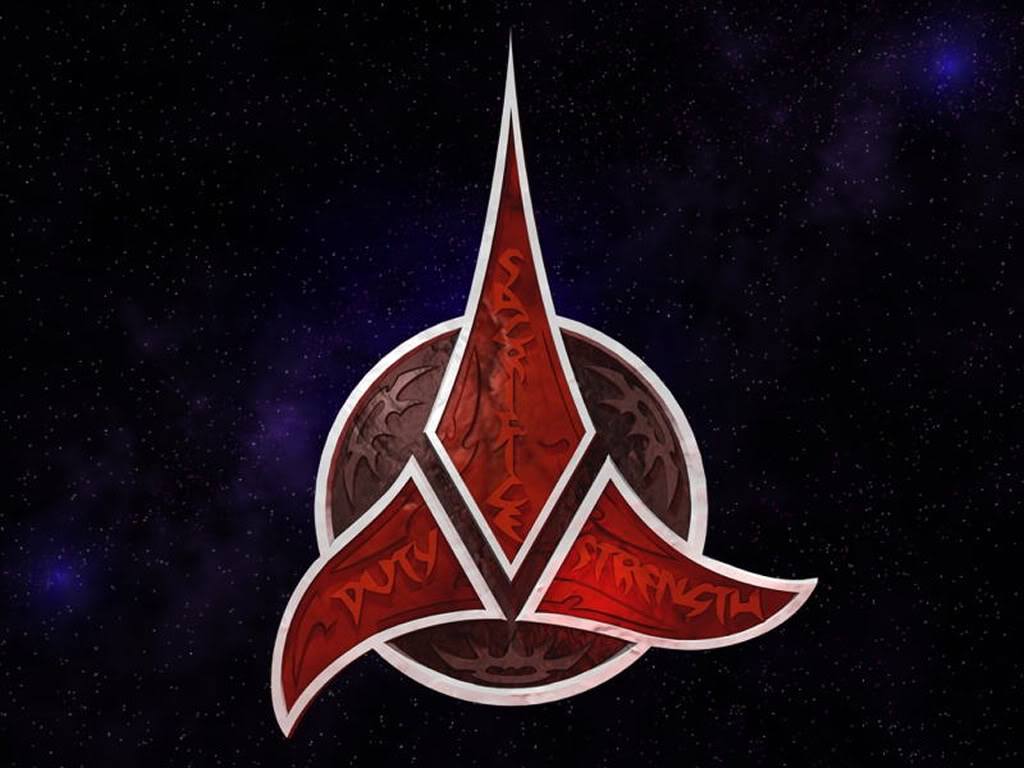
The KLINGON EMPIRE, once a mighty interstellar power, has fallen on hard times in the 25th century and may soon pass from history. For the past sixty years their fortunes have been ebbing, and with the rise of the Orion Syndicate on their trailing border, Klingon power may have already passed its zenith and may now be in inexorable decline.
Many analysts within Starfleet Intelligence point towards the collapse of the Khitomer Accords in 2372 as the beginning of the empire's decline. The High Council had been infiltrated by one of the Dominion Founders, who manipulated the empire into invading the Cardassian Union and even engineered a brief war between the Federation and the Klingons. During the First Dominion War, Klingon forces did their fair share of the fighting, including numerous engagements planetside against the Jem'Hadar in old-style warrior-to-warrior combat. The war reawakened the old marital spirit within the Empire, and when victory came, it was a cause for great celebration across the entire empire.
When the Romulan civilian government was overthrown by their military in the coup of 2380, the Klingons began raiding the spinward systems of the Romulan Star Empire. At that stage it had become difficult for the High Council to control its fleet commanders who were determined to win glory for themselves and who were still highly confident of their own abilities following the victory over the Dominion a decade earlier. This confidence would prove to be an almost fatal mistake.
After months of border skirmishes, the Romulans declared open war against the Klingons. Launching massive fleet engagements that drove deep into Klingon territory, they pushed the Klingons back and further back, shattering Klingon martial pride and killing huge numbers of Klingon warriors. Although the Klingons fought with their usual ferocity, their aging fleet was no match for the new Valdore-class Warbirds, and the Battle of Prygus in 2382 turned the war decisively in favour of the Romulans.
By 2385, the Klingon Empire had been conquered. Its industrial worlds were reduced to slag, the High Council had fled to Cardassian space, allying themselves with former enemies in exchange for sanctuary, and Qo'noS had been occupied by the victorious Romulans. For seven long years, a guerrilla movement remained active on Qo'noS while the High Council foolishly participated in the Alliance War against the might of the Federation.
In 2390, the Romulan military government, having long pursued a policy of executing any Klingons captured under arms, decided that the only way for the quadrant to be safe from future Klingon aggression was to exterminate the species. Dubbed 'The Ultimate Solution', the Romulans planned to burn off the atmosphere of Qo'noS and irradiate the planet's surface with fusion bombs. Under pressure from the Federation, this act of mass genocide was averted, and the Romulans finally withdrew from Klingon space in 2392.
Slowly over the next few years, the surviving Klingons returned home, entering a new period in their history - the "juH'chegh chu'bov", or Homecoming Era. Their empire had been shattered and their economy and technology had been reduced almost back to pre-warp levels. In the interim, the growing Orion Syndicate colonised many empty systems that were once Klingon, expanding their own territory while the Klingons were weak. The High Council returned to Qo'noS in late 2392, and the Klingons attempted to return to their old ways of honour and martial spirit, seeking to unite again as a people instead of being torn apart by feuding great Houses. To this end, the High Council pursued a policy of isolationism, and the Klingons have remained that way for most of the last forty years.
In the Seventh War of Retribution, the Klingons suffered as much as any Alpha Quadrant race, and were present at Coriana III when the Kem D'Neel were finally defeated. In 2415, the revolt of Sovek, the False Emperor, was overcome only with the help of Starfleet. The Klingons have struggled to revitalise their flagging economy while trying to repopulate their previous colony worlds, and their fleets are now aging badly while newer players in galactic politics, like the Orion Syndicate, grow in power and influence.
As the Orions expand and the Klingons seek to regain their old empire, Starfleet Intelligence estimates an 85% chance that there will be a major war between the Klingons and the Orions some time in the next five-to-fifteen years. They project that the victor of that war will become the 'third power' in the traditional Federation-Romulan-Klingon triad of politics in the Alpha Quadrant. The Klingon Empire, for so long the terror of the Alpha Quadrant, may soon be facing another war, and for the third time in the last century, it will be another war for its very existence. Only time will tell if the Klingons can prevail.
In mid-2433, a Klingon warlord - Is'toQ of the House of Martok - raided the Federation farming world of Sherman's Planet, seizing over a quarter-million tonnes of quintotriticale grain. The Klingons were driven away by the starship Phoenix, but intelligence gleaned from the encounter points to the grain being seized in order to prepare for a looming war between the Klingons and the Orions. Is'toQ also spoke of a restored High Council of 24 Great Houses, and of the Klingons having returned to their old ways of martial honour, but it is unknown if he was speaking the truth.
Many analysts within Starfleet Intelligence point towards the collapse of the Khitomer Accords in 2372 as the beginning of the empire's decline. The High Council had been infiltrated by one of the Dominion Founders, who manipulated the empire into invading the Cardassian Union and even engineered a brief war between the Federation and the Klingons. During the First Dominion War, Klingon forces did their fair share of the fighting, including numerous engagements planetside against the Jem'Hadar in old-style warrior-to-warrior combat. The war reawakened the old marital spirit within the Empire, and when victory came, it was a cause for great celebration across the entire empire.
When the Romulan civilian government was overthrown by their military in the coup of 2380, the Klingons began raiding the spinward systems of the Romulan Star Empire. At that stage it had become difficult for the High Council to control its fleet commanders who were determined to win glory for themselves and who were still highly confident of their own abilities following the victory over the Dominion a decade earlier. This confidence would prove to be an almost fatal mistake.
After months of border skirmishes, the Romulans declared open war against the Klingons. Launching massive fleet engagements that drove deep into Klingon territory, they pushed the Klingons back and further back, shattering Klingon martial pride and killing huge numbers of Klingon warriors. Although the Klingons fought with their usual ferocity, their aging fleet was no match for the new Valdore-class Warbirds, and the Battle of Prygus in 2382 turned the war decisively in favour of the Romulans.
By 2385, the Klingon Empire had been conquered. Its industrial worlds were reduced to slag, the High Council had fled to Cardassian space, allying themselves with former enemies in exchange for sanctuary, and Qo'noS had been occupied by the victorious Romulans. For seven long years, a guerrilla movement remained active on Qo'noS while the High Council foolishly participated in the Alliance War against the might of the Federation.
In 2390, the Romulan military government, having long pursued a policy of executing any Klingons captured under arms, decided that the only way for the quadrant to be safe from future Klingon aggression was to exterminate the species. Dubbed 'The Ultimate Solution', the Romulans planned to burn off the atmosphere of Qo'noS and irradiate the planet's surface with fusion bombs. Under pressure from the Federation, this act of mass genocide was averted, and the Romulans finally withdrew from Klingon space in 2392.
Slowly over the next few years, the surviving Klingons returned home, entering a new period in their history - the "juH'chegh chu'bov", or Homecoming Era. Their empire had been shattered and their economy and technology had been reduced almost back to pre-warp levels. In the interim, the growing Orion Syndicate colonised many empty systems that were once Klingon, expanding their own territory while the Klingons were weak. The High Council returned to Qo'noS in late 2392, and the Klingons attempted to return to their old ways of honour and martial spirit, seeking to unite again as a people instead of being torn apart by feuding great Houses. To this end, the High Council pursued a policy of isolationism, and the Klingons have remained that way for most of the last forty years.
In the Seventh War of Retribution, the Klingons suffered as much as any Alpha Quadrant race, and were present at Coriana III when the Kem D'Neel were finally defeated. In 2415, the revolt of Sovek, the False Emperor, was overcome only with the help of Starfleet. The Klingons have struggled to revitalise their flagging economy while trying to repopulate their previous colony worlds, and their fleets are now aging badly while newer players in galactic politics, like the Orion Syndicate, grow in power and influence.
As the Orions expand and the Klingons seek to regain their old empire, Starfleet Intelligence estimates an 85% chance that there will be a major war between the Klingons and the Orions some time in the next five-to-fifteen years. They project that the victor of that war will become the 'third power' in the traditional Federation-Romulan-Klingon triad of politics in the Alpha Quadrant. The Klingon Empire, for so long the terror of the Alpha Quadrant, may soon be facing another war, and for the third time in the last century, it will be another war for its very existence. Only time will tell if the Klingons can prevail.
In mid-2433, a Klingon warlord - Is'toQ of the House of Martok - raided the Federation farming world of Sherman's Planet, seizing over a quarter-million tonnes of quintotriticale grain. The Klingons were driven away by the starship Phoenix, but intelligence gleaned from the encounter points to the grain being seized in order to prepare for a looming war between the Klingons and the Orions. Is'toQ also spoke of a restored High Council of 24 Great Houses, and of the Klingons having returned to their old ways of martial honour, but it is unknown if he was speaking the truth.
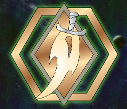
The ORION SYNDICATE is the government of the Orions, a green-skinned humanoid species originating in the Rigel system. Founded in the 22nd century, the Syndicate's early years are those of a criminal organisation, whose activites included racketeering, smuggling, piracy, and slave-trading, and business was good. The Syndicate expanded throughout the Triangle, becoming powerful enough to keep the Federation, Klingons, and Romulans at bay - indeed, by the early 24th century, the Syndicate was employing members of many different species.
Never a wholly unified people, the Orions themselves held an ambivalent view of the Syndicate, which wielded much influence over Orion society as a whole. All that changed in the aftermath of the Romulan withdrawal from Klingon space in 2392. The Romulans withdrew to their pre-war borders, leaving an enormous swathe of empty space in their wake that was formerly part of the Klingon Empire. Most of those worlds had been scoured of life during the Klingon-Romulan War of 2381-2385, and presented a ripe opportunity for the Orions.
In the wake of the retreating Romulans, the Syndicate used its power and influence to unify the Orion people behind it, and it was declared the legitimate government of the Orion people. For the first time, foreign powers could negotiate with the Orions as a united people. With this shift in their politics, the Orions began to function as a new player on the galactic stage, opening diplomatic relations with all the Alpha Quadrant powers, while still keeping their distance from them.
The Orions were quick to seize the opportunity presented by the collapse of the Klingon Empire and the withdrawal of the Romulans. Against the protestations of both powers, the Orions colonised many former Klingons worlds close to the Triangle, greatly expanding their borders and creating a new buffer zone between both Klingon and Romulan space. For the past three decades, the Orions have been developing their new colonies and launching a programme of military shipbuilding. They are the newest power in the Alpha Quadrant, and their power is growing quickly, so much so that they are now directly competing against the Ferengi for the choicest business morsels across the quadrant.
Relations with the Federation have not been smooth. While maintaining trade links, the Orions have kept a diplomatic distance from the Federation, refusing to participate in the Seventh War of Retribution but selling ship parts, weapons and shield systems to everyone else. Utilising their past as a criminal organisation, the Syndicate has also developed a dangerous intelligence network, culminating in their capture of the fully intact and operational Nova-class USS Patriot in 2420. The compromising of the entire line of Nova-class destroyers was a blow to Starfleet Intelligence, who were finally forced to take the Orions seriously as galactic players.
As the Orions expand and the Klingons seek to regain their old empire, Starfleet Intelligence estimates an 85% chance that there will be a major war between the Klingons and the Orions some time in the next five-to-fifteen years. They project that the victor of that war will become the 'third power' in the traditional Federation-Romulan-Klingon triad of politics in the Alpha Quadrant. There is no doubt about it - after centuries on the sidelines, the Orions may soon be a deadly force to be reckoned with.
Never a wholly unified people, the Orions themselves held an ambivalent view of the Syndicate, which wielded much influence over Orion society as a whole. All that changed in the aftermath of the Romulan withdrawal from Klingon space in 2392. The Romulans withdrew to their pre-war borders, leaving an enormous swathe of empty space in their wake that was formerly part of the Klingon Empire. Most of those worlds had been scoured of life during the Klingon-Romulan War of 2381-2385, and presented a ripe opportunity for the Orions.
In the wake of the retreating Romulans, the Syndicate used its power and influence to unify the Orion people behind it, and it was declared the legitimate government of the Orion people. For the first time, foreign powers could negotiate with the Orions as a united people. With this shift in their politics, the Orions began to function as a new player on the galactic stage, opening diplomatic relations with all the Alpha Quadrant powers, while still keeping their distance from them.
The Orions were quick to seize the opportunity presented by the collapse of the Klingon Empire and the withdrawal of the Romulans. Against the protestations of both powers, the Orions colonised many former Klingons worlds close to the Triangle, greatly expanding their borders and creating a new buffer zone between both Klingon and Romulan space. For the past three decades, the Orions have been developing their new colonies and launching a programme of military shipbuilding. They are the newest power in the Alpha Quadrant, and their power is growing quickly, so much so that they are now directly competing against the Ferengi for the choicest business morsels across the quadrant.
Relations with the Federation have not been smooth. While maintaining trade links, the Orions have kept a diplomatic distance from the Federation, refusing to participate in the Seventh War of Retribution but selling ship parts, weapons and shield systems to everyone else. Utilising their past as a criminal organisation, the Syndicate has also developed a dangerous intelligence network, culminating in their capture of the fully intact and operational Nova-class USS Patriot in 2420. The compromising of the entire line of Nova-class destroyers was a blow to Starfleet Intelligence, who were finally forced to take the Orions seriously as galactic players.
As the Orions expand and the Klingons seek to regain their old empire, Starfleet Intelligence estimates an 85% chance that there will be a major war between the Klingons and the Orions some time in the next five-to-fifteen years. They project that the victor of that war will become the 'third power' in the traditional Federation-Romulan-Klingon triad of politics in the Alpha Quadrant. There is no doubt about it - after centuries on the sidelines, the Orions may soon be a deadly force to be reckoned with.
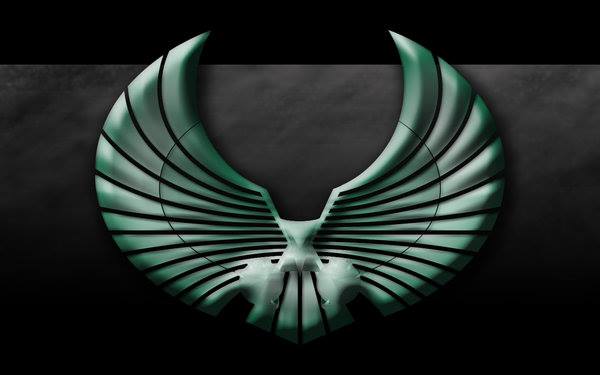
The ROMULAN STAR EMPIRE is a major interstellar state ruled by the Romulan people. It neighbours the United Federation of Planets and is commonly seen as its chief rival for domination of the quadrant. It is a xenophobic and ethnocentric totalitarian state, ruled by an absolutist Senate and kept in line by its fearsome secret police, the Tal' Shiar.
The Romulans made war on the burgeoning Federation in the immediate years before its formation, and have been its implacable enemies ever since. After a long period of isolationism, they re-emerged into galactic politics in 2364 - since then, their power has grown, being nullified only by an equally strong Federation.
The Romulans participated in the First Dominion War, seeing the tactical sense of preventing the Dominion access to the Alpha Quadrant. However, shortly following that victory, a coup occurred on Romulus which overthrew the Senate and installed a military government.
The new military government was quick to test its strength. In response to increasing Klingon raids on its spinward and Triangle borders, the Romulans declared war on the Klingons. The conflict raged for four bloody years, but eventually, following the momentous Battle of Prygus, the Romulans gained the upper hand.
In 2385, they conquered Qo'noS and occupied it. For the next seven years, the Romulans were bogged down in a costly and unwinnable guerrilla war against the surviving Klingons, until a plan (dubbed The Ultimate Solution) was hatched to eradicate the Klingon species from existence. However, dissident republican elements within the Romulan government made public the plans for the Ultimate Solution, drawing widespread intergalactic condemnation. Under increasing pressure at home and abroad, the military government finally abandoned Qo'noS, leaving the Klingon Empire in ruins, and finally authorised new republican elections, marking a return to a civilian government.
The new government quietly rebuilt its strength, but twenty years later, the arrival of the Kem D'Neel in the Alpha Quarant signalled a new time of trial for the empire. The Romulans suffered as much as anyone from the genocidal attacks of the Enforcers, losing almost half of their standing military and billions of its citizens. The Romulans sent a fleet to Coriana III to assist the Federation, and their contribution in numbers was second only to Starfleet's on that historic day.
Shortly afterward, the Romulans made First Contact with the Locusta Regime. This inter-dimensional power managed to manipulate two important events in recent Romulan history - reunification with Vulcan and a new Incursion into Federation space. The Locusta convinced the Senate that the Federation was responsible for the Kem D'Neel attacks, and that the acquisition of large quantities of the element known as Letridium would be useful to make weapons if the Enforcers should return. In 2413, a Romulan fleet attacked and destroyed the Vigilance Platform in the Federation's Vega system, seizing the letridium there. The Federation prepared for war, but the involvement and lies of the Locusta was made public, and, humiliated by how easily they had been manipulated, the Romulans withdrew back behind the Neutral Zone.
Nearly two decades later, a new incident threatened war between the two powers. A Federation fleet destroyed several Romulan listening posts in the Neutral Zone, sparking a massive Romulan backlash. The Romulans invaded the Federation in force in the summer of 2429, destroying Starfleet's Neutral Zone fleet and laying siege to Bolarus. Unknown to them, the Federation was teetering on the edge of civil war at the time, and the attacks on their listening posts were a ploy to cement the Neo-Essentialists' hold on the Federation's reins of power.
In 2430, a secret meeting took place on Limbo between the crew of the USS Phoenix and Admiral Delora Radaik, the victor of the Battle of Prygus against the Klingons some half-century previously. Admiral Radaik was given proof of the Neo-Essentialist involvement in the Starfleet attacks on the Neutral Zone outposts, and seeing the threat to the quadrant's delicate balance of power if the Federation collapsed, she returned home to convince the Senate to withdraw from Federation space.
In 2432, Delora Radaik was elected Praetor of the Romulan Star Empire. Her first act was to call for a reaffirmation of the Treaty of Algeron between the Federation and the Empire, beginning a path back to peace for both powers. Unfortunately, her efforts were hampered by an expansionistic Senate faction known as the Warhawks, who sought to trigger a new conflict between the Federation and the Empire. With the intervention of the starship Phoenix, the plan was thwarted.
In mid-2433, negotiations began between the Federation and the Romulans regarding a new peace treaty between the two powers.
The Romulans made war on the burgeoning Federation in the immediate years before its formation, and have been its implacable enemies ever since. After a long period of isolationism, they re-emerged into galactic politics in 2364 - since then, their power has grown, being nullified only by an equally strong Federation.
The Romulans participated in the First Dominion War, seeing the tactical sense of preventing the Dominion access to the Alpha Quadrant. However, shortly following that victory, a coup occurred on Romulus which overthrew the Senate and installed a military government.
The new military government was quick to test its strength. In response to increasing Klingon raids on its spinward and Triangle borders, the Romulans declared war on the Klingons. The conflict raged for four bloody years, but eventually, following the momentous Battle of Prygus, the Romulans gained the upper hand.
In 2385, they conquered Qo'noS and occupied it. For the next seven years, the Romulans were bogged down in a costly and unwinnable guerrilla war against the surviving Klingons, until a plan (dubbed The Ultimate Solution) was hatched to eradicate the Klingon species from existence. However, dissident republican elements within the Romulan government made public the plans for the Ultimate Solution, drawing widespread intergalactic condemnation. Under increasing pressure at home and abroad, the military government finally abandoned Qo'noS, leaving the Klingon Empire in ruins, and finally authorised new republican elections, marking a return to a civilian government.
The new government quietly rebuilt its strength, but twenty years later, the arrival of the Kem D'Neel in the Alpha Quarant signalled a new time of trial for the empire. The Romulans suffered as much as anyone from the genocidal attacks of the Enforcers, losing almost half of their standing military and billions of its citizens. The Romulans sent a fleet to Coriana III to assist the Federation, and their contribution in numbers was second only to Starfleet's on that historic day.
Shortly afterward, the Romulans made First Contact with the Locusta Regime. This inter-dimensional power managed to manipulate two important events in recent Romulan history - reunification with Vulcan and a new Incursion into Federation space. The Locusta convinced the Senate that the Federation was responsible for the Kem D'Neel attacks, and that the acquisition of large quantities of the element known as Letridium would be useful to make weapons if the Enforcers should return. In 2413, a Romulan fleet attacked and destroyed the Vigilance Platform in the Federation's Vega system, seizing the letridium there. The Federation prepared for war, but the involvement and lies of the Locusta was made public, and, humiliated by how easily they had been manipulated, the Romulans withdrew back behind the Neutral Zone.
Nearly two decades later, a new incident threatened war between the two powers. A Federation fleet destroyed several Romulan listening posts in the Neutral Zone, sparking a massive Romulan backlash. The Romulans invaded the Federation in force in the summer of 2429, destroying Starfleet's Neutral Zone fleet and laying siege to Bolarus. Unknown to them, the Federation was teetering on the edge of civil war at the time, and the attacks on their listening posts were a ploy to cement the Neo-Essentialists' hold on the Federation's reins of power.
In 2430, a secret meeting took place on Limbo between the crew of the USS Phoenix and Admiral Delora Radaik, the victor of the Battle of Prygus against the Klingons some half-century previously. Admiral Radaik was given proof of the Neo-Essentialist involvement in the Starfleet attacks on the Neutral Zone outposts, and seeing the threat to the quadrant's delicate balance of power if the Federation collapsed, she returned home to convince the Senate to withdraw from Federation space.
In 2432, Delora Radaik was elected Praetor of the Romulan Star Empire. Her first act was to call for a reaffirmation of the Treaty of Algeron between the Federation and the Empire, beginning a path back to peace for both powers. Unfortunately, her efforts were hampered by an expansionistic Senate faction known as the Warhawks, who sought to trigger a new conflict between the Federation and the Empire. With the intervention of the starship Phoenix, the plan was thwarted.
In mid-2433, negotiations began between the Federation and the Romulans regarding a new peace treaty between the two powers.
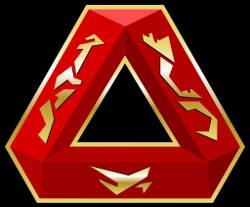
The THOLIAN ASSEMBLY is a small Alpha Quadrant power that lies to the coreward-trailing border of the Federation. The Tholians are a xenophobic crystalline species, whose relations with the Federation were initially hostile, but are now a cold neutral. They are aggressive and territorial, but can be reasoned with. They do not venture far from their own borders.
What is conclusively known about the Tholians is limited. It is known that they are a very old race, older than any of the existing Alpha Quadrant powers. It is also known that their normal environment would appear to be super-hot methane. Their territory is largely unexplored because any ship that has ventured into Tholian space has been captured and crushed by their continually evolving tractor beam technology.
Little is known about Tholian technology or their starships. They are quite small by comparison to Federation starships, but several of them operating together can create what is known as a 'Tholian Web' - a high-power immobilisation field around any other starship. The rank of a starship commander is considered to be Commander, but many agree that this is merely the universal translator's closest approximation to the Tholian language (if a language is what they have - being crystalline beings, they must communicate via portable vox units).
After three centuries of isolation and sporadic attacks on Federation territory, the Tholians began to respond to diplomacy. They have sent Ambassadors to the capital worlds of the Alpha Quadrant powers (but have not reciprocated the favour). They allowed the starship USS Century to venture into their space and make contact with them. But the Tholians move slowly, perhaps as a result of their physiology, and it may be many more decades or centuries before diplomacy between the Federation and the Assembly at last comes to fruition.
In the early decades of the 25th century, a new theory regarding the link between the Tholians and the Thal has emerged. With such physiological similarities between the two species, Starfleet Intelligence believes that the Tholians may be an off-shoot, or a devolved form of, the Thal. The working theory is that Tholians are the remains of an ancient 'garrison' left behind by the Thal that devolved due to lack of contact with the Hive Mind. If this theory is accurate, then it puts a whole new dangerous spin on one of the Federation's neighbours, especially if the rumours of an imminent Thal return are to be believed.
What is conclusively known about the Tholians is limited. It is known that they are a very old race, older than any of the existing Alpha Quadrant powers. It is also known that their normal environment would appear to be super-hot methane. Their territory is largely unexplored because any ship that has ventured into Tholian space has been captured and crushed by their continually evolving tractor beam technology.
Little is known about Tholian technology or their starships. They are quite small by comparison to Federation starships, but several of them operating together can create what is known as a 'Tholian Web' - a high-power immobilisation field around any other starship. The rank of a starship commander is considered to be Commander, but many agree that this is merely the universal translator's closest approximation to the Tholian language (if a language is what they have - being crystalline beings, they must communicate via portable vox units).
After three centuries of isolation and sporadic attacks on Federation territory, the Tholians began to respond to diplomacy. They have sent Ambassadors to the capital worlds of the Alpha Quadrant powers (but have not reciprocated the favour). They allowed the starship USS Century to venture into their space and make contact with them. But the Tholians move slowly, perhaps as a result of their physiology, and it may be many more decades or centuries before diplomacy between the Federation and the Assembly at last comes to fruition.
In the early decades of the 25th century, a new theory regarding the link between the Tholians and the Thal has emerged. With such physiological similarities between the two species, Starfleet Intelligence believes that the Tholians may be an off-shoot, or a devolved form of, the Thal. The working theory is that Tholians are the remains of an ancient 'garrison' left behind by the Thal that devolved due to lack of contact with the Hive Mind. If this theory is accurate, then it puts a whole new dangerous spin on one of the Federation's neighbours, especially if the rumours of an imminent Thal return are to be believed.
